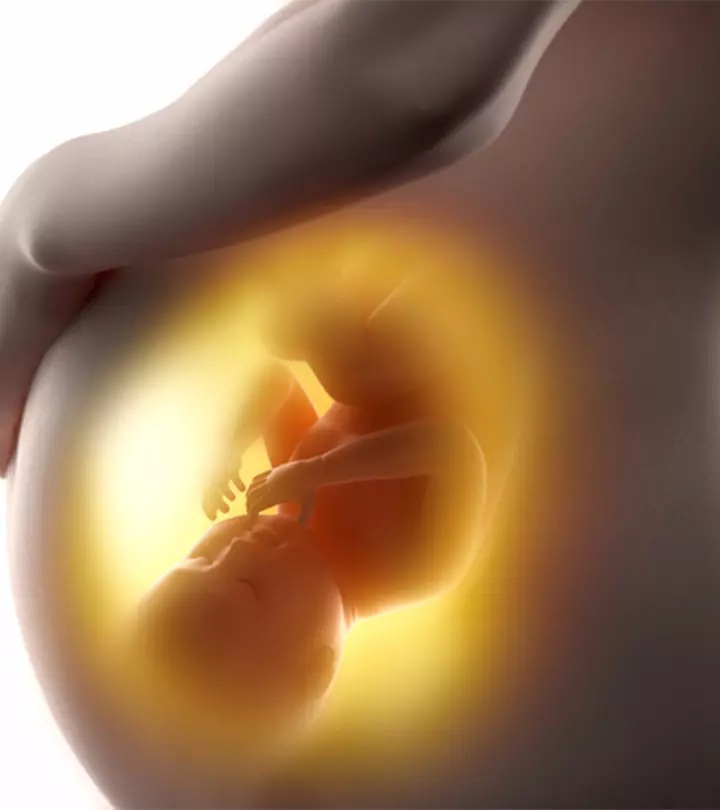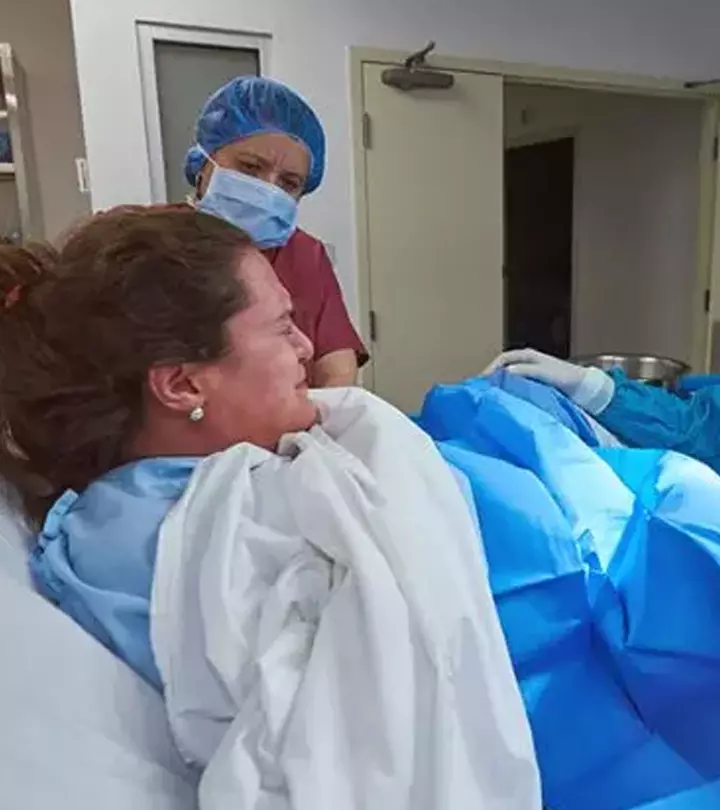

Image: iStock
It does not take a genius to figure out that your stomach undergoes major changes during pregnancy. It is always good to know the scientific reasons behind the changes in your body. Whether having a huge baby belly was something that you were always looking forward to or looking at your pregnant body in the mirror depresses you, knowing what really goes on inside your body during pregnancy is interesting, to say the least.

Most women start noticing their baby bump as early as 12 weeks into their pregnancy [1]. Some women may have to wait until the end of their first trimester to display any signs of a baby bump while others may show misleading signs.
Sometimes, the signs of a big belly in pregnant women may just be a sign of bloating. This is due to the hormone progesterone [2]. Pregnant women start producing higher levels of progesterone to help their babies grow and develop inside of them. It also slows down the metabolism rates in women. This means that pregnant women may have a slower digestive process, which may lead to increased gas production in the stomach. Increased gas levels in the body can lead to bloating. Therefore, your baby bump may not actually be due to the size of your baby at all.
By the time you reach your second trimester, your uterus undergoes some major changes [3]. Often described as the ‘honeymoon trimester’ by doctors, during this stage, your uterus grows in size from that of a peach to the size of a tangerine. Your uterus starts pushing upwards rather than resting low at the level of your pelvic bone. In fact, doctors claim that your uterus can increase to more than one thousand times its original size by the time you give birth!
As you get closer and closer to the last stretch: the third and final trimester, your body undergoes some distinctive changes. By now you will most likely have a baby bump that is easily visible. The size of this bump, however, differs from one pregnant woman to another. Depending on the position of the baby in the womb, some women may already have a significantly big bump whereas other women may only show signs of an outward belly just weeks before their delivery.
As your belly stretches so does your skin. This phenomenon causes women to develop those infamous stretch marks. If you notice that you do not have any stretch marks from the swelling of your belly, consider yourself part of the luckier half of pregnant women. However, you may still find your middle region to grow extremely itchy. Applying calming lotions to affected areas may help soothe the itchiness.
By the time you are ready to deliver your child into this world, your uterus will have stretched to the size of a watermelon [4]! During this time, your uterus will cover the region between your rib cage and your pubic area.
Once your baby is born, it will take around a month and a half for your uterus to shrink back to its pre-pregnancy size. This is not the same for the size of your stomach though. It can take between four to six months for your stomach to gradually return to its pre-pregnancy state. Doctors claim that losing your ‘baby weight’ can take anywhere between eight months to a year. However, you should wait till the time your uterus returns to its original size before starting any fitness programs to avoid serious injuries to your body.
You should be ready to accept the fact that your body will not return to its pre-pregnancy state overnight. Try to give as much care to your body during the postpartum process as you did during the pregnancy process. With a little determination and a whole lot of patience, you will be able to cruise through the postnatal stage of your pregnancy.
Community Experiences
Join the conversation and become a part of our nurturing community! Share your stories, experiences, and insights to connect with fellow parents.













